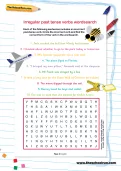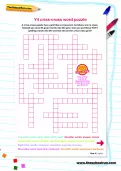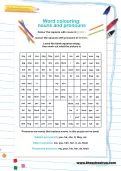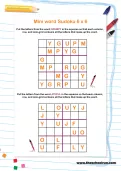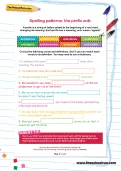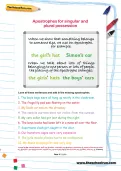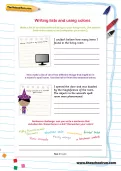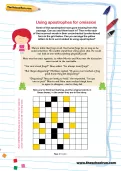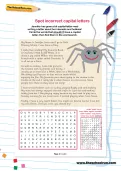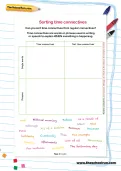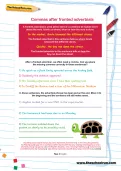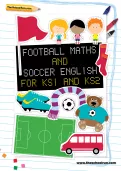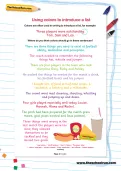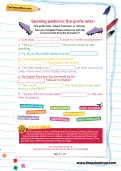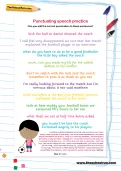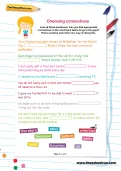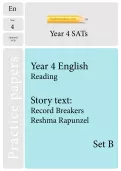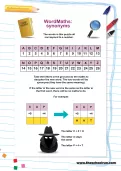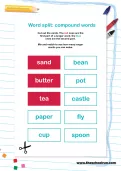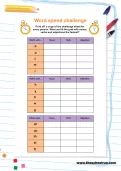A prefix is a string of letters added to the beginning of a root word, changing its meaning. Each prefix has a meaning; anti- means ‘against’. Cut out the following words and definitions. See if you can match each words to its definition.
or
Register to add to your saved resources
Already a subscriber? to view this content.
This Year 4 English worksheet was created by an experienced primary school teacher to help your child understand and practise using apostrophes for singular and plural possession.
or
Register to add to your saved resources
Already a subscriber? to view this content.
Make a list of all of the different things in your living room. Use them to finish this sentence (and remember your colon!). Now make a list of all of the different things that might be in a wizard’s spell room. Use the list to finish the sentence below.
or
Register to add to your saved resources
Already a subscriber? to view this content.
Some of the apostrophes have gone missing from this passage. Can you add them back in? Then write each of the incorrect words in their uncontracted (unshortened) form in the grid below. Can you arrange the yellow letters to form word related to using apostrophes?
or
Register to add to your saved resources
Already a subscriber? to view this content.
Jennifer has gone a bit capital-letter-mad writing a letter about her interests and hobbies! Circle the words that shouldn’t have a capital letter, then find them in the wordsearch.
or
Register to add to your saved resources
Already a subscriber? to view this content.
Time connectives are words or phrases used in writing or speech to explain WHEN something is happening. Can you sort these time connectives from regular connectives?
or
Register to add to your saved resources
Already a subscriber? to view this content.
A fun and free activity created by an experienced teacher with the aim of teaching KS2 children about irregular past tense verbs. Each of the sentences on the worksheet includes an incorrect past-tense verb. Circle the incorrect verb and then find the correct form of the verb in the wordsearch.
or
Register to add to your saved resources
A fronted adverbial is used at the start of a sentence to explain more about the verb. It tells us where, when or how the verb is done. After a fronted adverbial, we often need a comma. Can you place the missing commas correctly in these sentences?
or
Register to add to your saved resources
Already a subscriber? to view this content.
Make the most of World Cup fever and give grammar, division and spelling practice a football twist with our soccer-themed worksheets for KS1 and KS2 children.
or
Register to add to your saved resources
Already a subscriber? to view this content.
Colons are often used in writing to introduce a list. Where do you think colons should go in these sentences?
or
Register to add to your saved resources
Already a subscriber? to view this content.
The prefix inter- means ‘between’ or ‘among’. Can you complete these sentences with the correct words from the box?
or
Register to add to your saved resources
Already a subscriber? to view this content.
Can you add the correct punctuation to these sentences?
or
Register to add to your saved resources
Already a subscriber? to view this content.
A teacher-created, fronted adverbial worksheet that provides an explanation of what a fronted adverbial is, with examples and a football-themed activity. Cut out these parts of sentences. Can you match the fronted adverbial to the correct sentence ending?
or
Register to add to your saved resources
Look at these sentences. Can you find appropriate connectives in the word bank below to go in the gaps?
or
Register to add to your saved resources
Already a subscriber? to view this content.
Exclusively available to TheSchoolRun subscribers, this Year 4 English practice optional SATs paper has been written by a primary-school teacher to mirror the old optional SATs papers used in schools up to 2015 to assess pupils' progress at the end of the KS2 school year.
or
Register to add to your saved resources
Already a subscriber? to view this content.
Exclusively available to TheSchoolRun subscribers, this Year 4 English practice optional SATs paper has been written by a primary-school teacher to mirror the old optional SATs papers used in schools prior to 2016 to assess pupils' progress at the end of the KS2 school year.
or
Register to add to your saved resources
Already a subscriber? to view this content.
The words in this puzzle all correspond to a number. Take the letters in the grid and do the maths to decipher the new word. The two words will be synonyms (they have the same meaning). If the letter in the new word is the same as the letter in the first word, there will be no maths to do.
or
Register to add to your saved resources
Already a subscriber? to view this content.
A mix and match puzzle created by teachers, using compound words, to support primary school literacy and demonstrate examples of compound words.
or
Register to add to your saved resources
Print off a copy of the challenge sheet for every person. Who can fill the grid with nouns, verbs and adjectives the fastest?
or
Register to add to your saved resources
Already a subscriber? to view this content.
Colour the squares with nouns in green. Colour the squares with pronouns in brown. Leave the blank squares empty, then work out what the picture is.
or
Register to add to your saved resources
